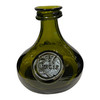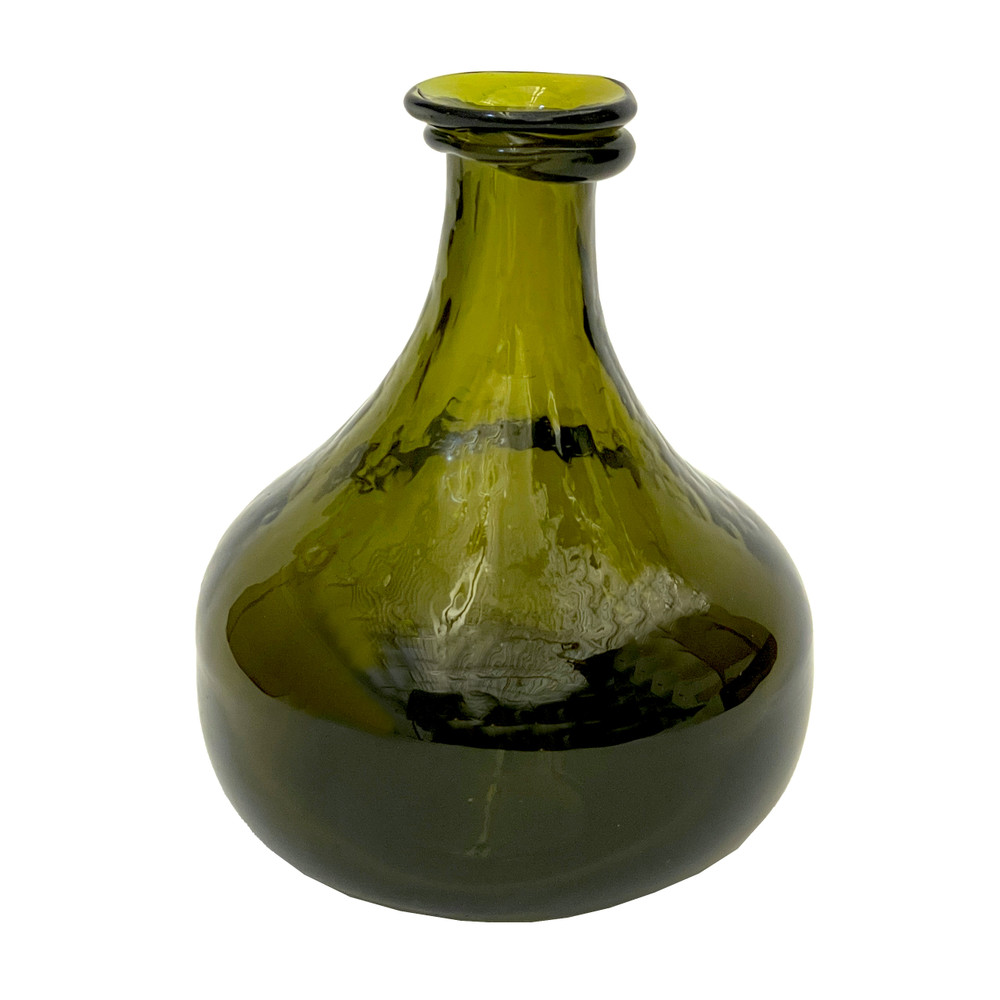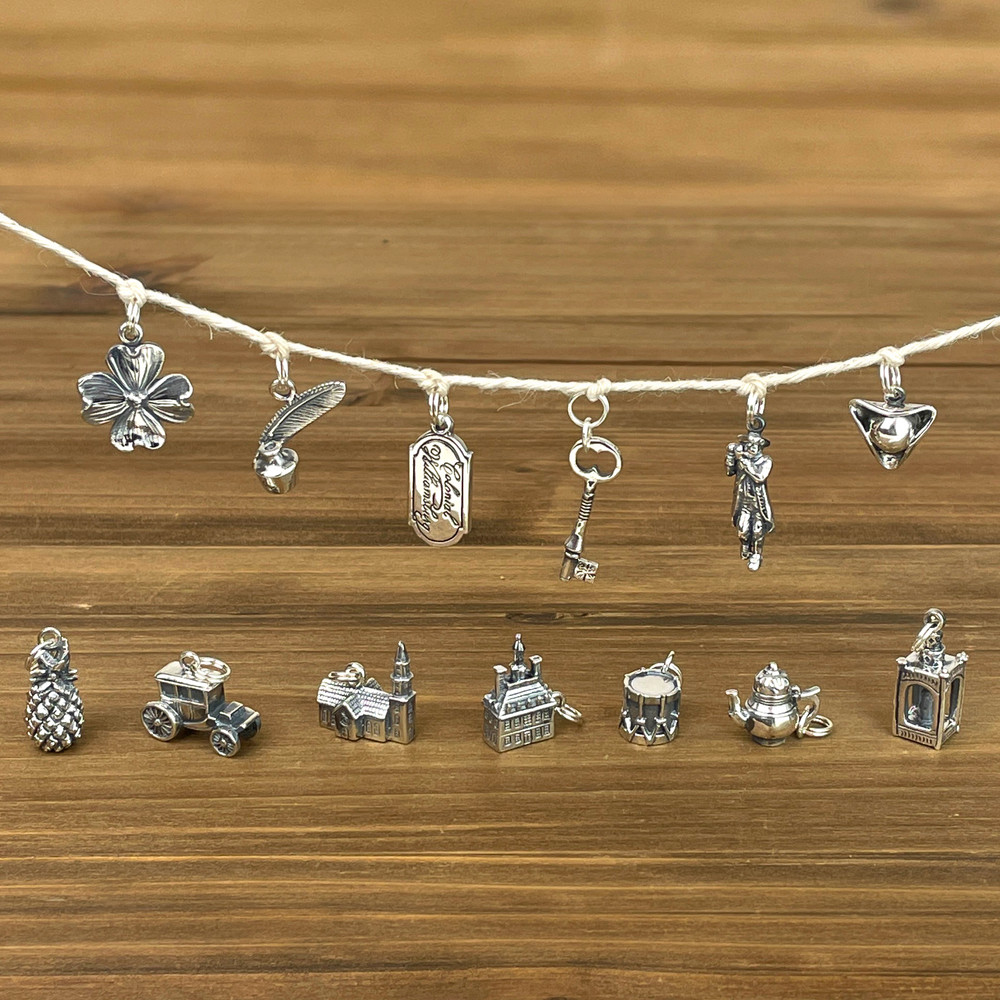Product Description
This 18th Century Onion Bottle with John Custis Armorial Seal is fabricated by Phil Gilson, a master glassblower in Lawrenceville, Virginia, using techniques handed down by generations of artisans in Gilson's family. The onion bottle will hold approximately two small glasses of wine. This bottle includes a seal displaying one of several seals used by John Custis IV. This reproduction green glass onion bottle is excellent for historical re-enactments, locations, and events when historical accuracy is required or desired.
Features
- Reproduction an 18th-century glass onion bottle
- John Custis Amorial seal inspired by a bottle excavated from Well B at the Custis Square archaeological site in 1964
- Measures approximately 5"H x 5 3/4" diameter; 3/4" diameter opening
- 10 - 12 oz. capacity
- Bottle green color is historically accurate to the 18th century
- Food-safe glass
- Hand-made in the USA
Please note: This is a hand-made item produced using historically accurate 18th-century methods. You can expect variations in color, small bubbles or other minor irregularities, and slight variations in dimensions due to the manufacturing process. These are not defects.
Inspiration
The classic shape of the onion bottle is synonymous with wine bottles of the early 18th century. Many examples of onion bottles have been found in Williamsburg, including this one in our collections (object #1965-185,A). When the bottle was gifted to The Colonial Williamsburg Foundation in 1965 by Miss Josephine Doran, a label attached to the bottle tells of its origin: "Found 1810 in the cellar on the 'Six Chimney Lot', the old residence of the Custis Family in Williamsburg, VA, and Presented by Mrs. Galt to Jas. W. Custis. 1852."
The seal on this particular reproduction glass onion bottle is inspired by a seal on a bottle found at the bottom layer of Well B excavated at the Custis Square Archaeological Site in 1964. The seal is applied in a similar fashion to the one noted above also belonging to John Custis IV. You can see a picture of the bottle that inspired Mr. Gilson's reproduction in, Testing the Waters and Where Did it Go?, two digital presentations from the Colonial Williamsburg Department of Archaeology.
About the Artist
Phil Gilson might be the last colonial American-style glassblower working full-time in the traditions developed in the 18th Century. A cousin of the Wistars, owners of America's first successful glass operation, Gilson's craft is not only a passion but a family legacy since the 1730s.
Gilson focuses most of his work on producing and perpetuating designs for historic homes, museums, schools, and the living history and re-enacting community. He makes many pieces using original molds and hand tools handed down for generations.
Gilson is the last of two known master chippers in the country. Chipping is the trade of carving directly into cast-iron glass molds to re-create embossed bottles and flasks of the past. The custom carvings enable Gilson to produce modern commemorative interpretations by placing interchangeable inserts in antique molds.
His work includes custom free-blown, pressed glass, and dip-molded pieces. All of his work is made in well-documented historical bottle-glass colors.
Early American Life magazine's esteemed directory of Traditional American Crafts includes Phil Gilson as a member.















